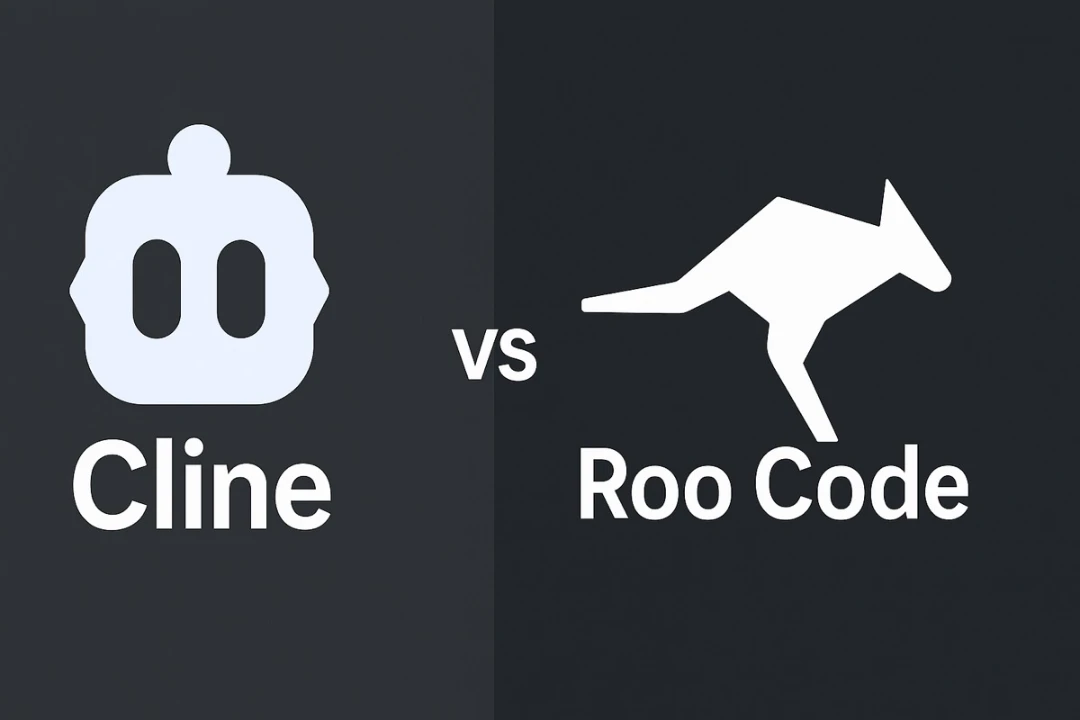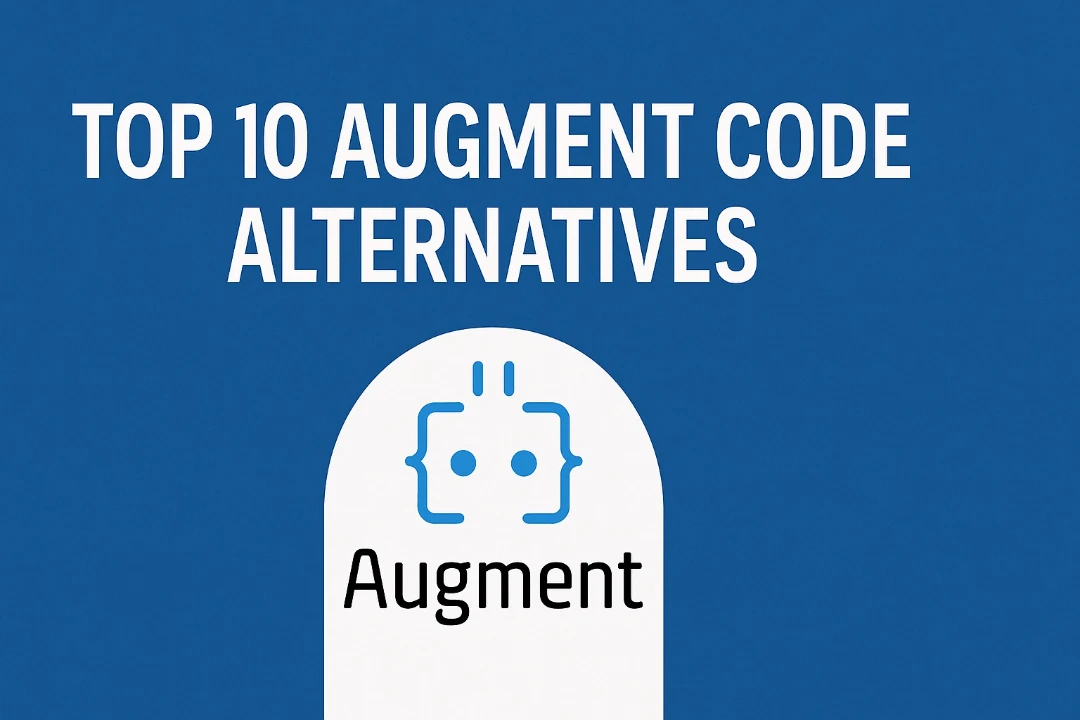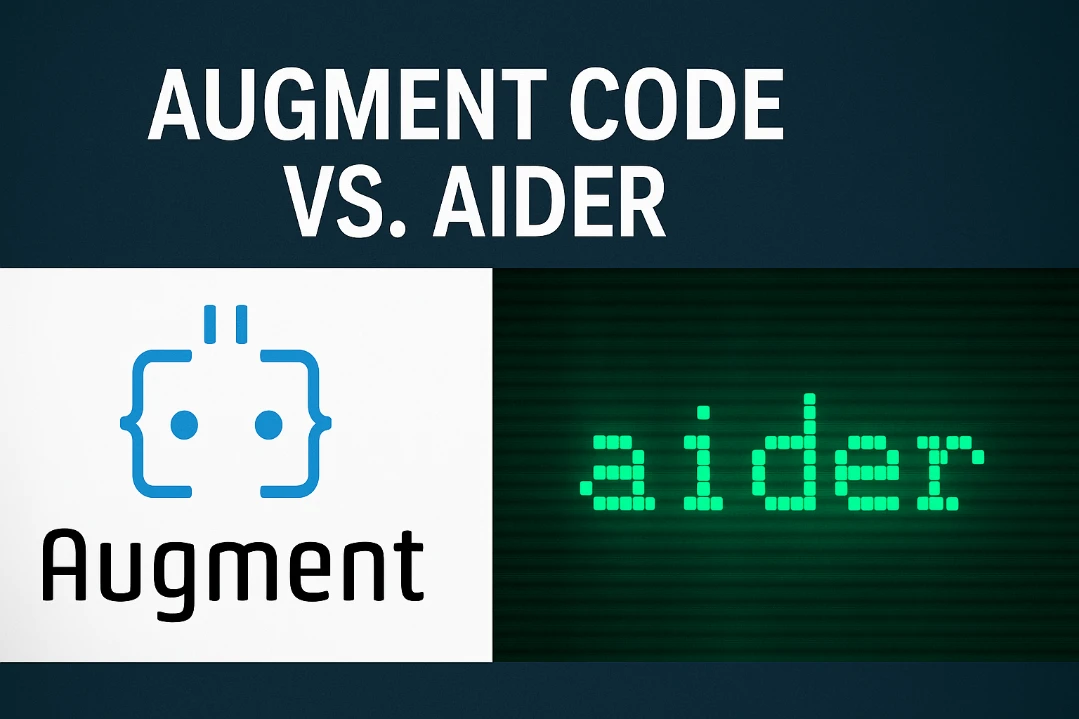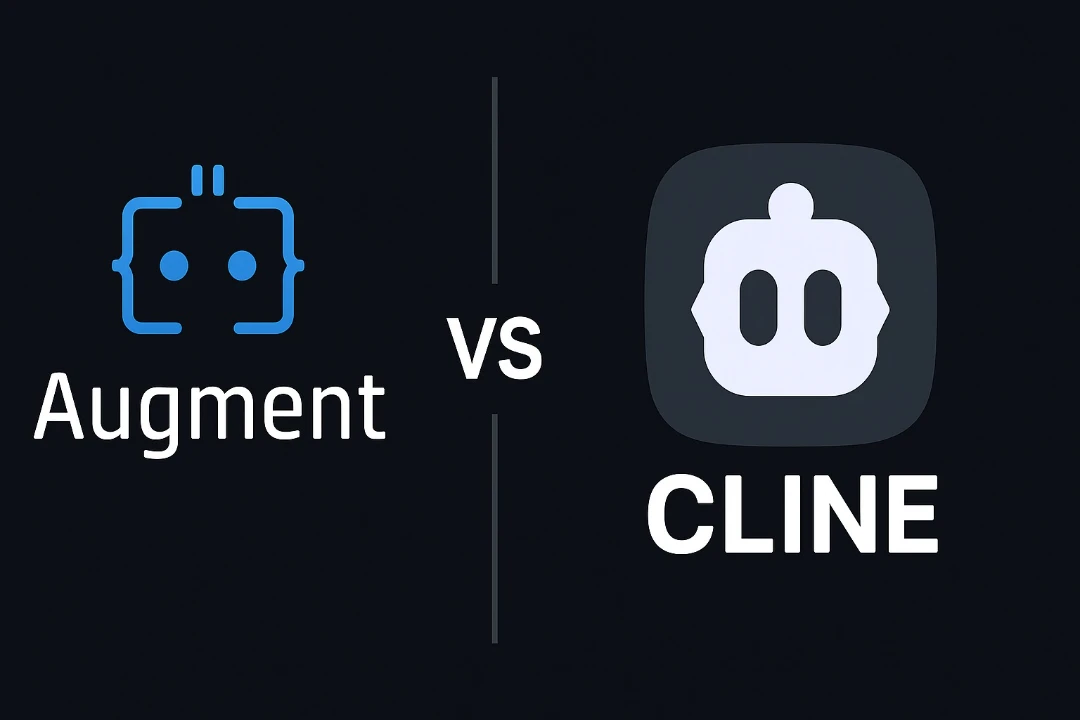
Cline vs Roo Code: The Ultimate AI Coding Assistant Comparison Guide for 2025
Cline vs Roo Code: The Ultimate AI Coding Assistant Comparison Guide for 2025
In today's fast-paced development environment, AI-powered coding assistants have become essential productivity tools that can significantly speed up your workflow, help solve complex problems, and assist with repetitive tasks. With an expanding landscape of options, two tools have emerged as powerful contenders in the VS Code ecosystem: Cline and Roo Code.
While both offer impressive AI capabilities, choosing between them requires understanding their unique strengths, limitations, and ideal use cases. This comprehensive guide will walk you through everything you need to know to make an informed decision between these two advanced AI coding companions.
The Origin and Evolution of Cline and Roo Code
Cline: The Original Autonomous Coding Agent
Cline emerged as an autonomous coding agent designed to integrate directly into VS Code. Built around Claude 3.7 Sonnet's agentic coding capabilities, Cline quickly gained popularity for its ability to handle complex software development tasks step-by-step. Its key philosophy revolves around being a thoughtful collaborator rather than just a code generator - providing explanations, breaking down complex problems, and maintaining meaningful dialog with developers.
Token-based AI coding assistant with advanced model flexibility and deep VSCode integration
The tool operates similarly to a experienced pair programmer who can:
- Create and edit files
- Execute terminal commands with your permission
- Use browser automation for debugging and testing
- Read and understand entire codebases
In early 2025, Cline reached over 1.2 million installations and 39,000+ GitHub stars, solidifying its position as a leading AI coding assistant.
Roo Code: The Supercharged Fork
Roo Code (previously known as Roo Cline) began as a fork of Cline, taking the original foundation and extending it with additional features and customization options. Born from the idea that developers needed more flexibility and control over their AI assistant, Roo Code has evolved into a powerhouse option with its own distinct identity.
Open-source autonomous AI coding agent with extensive customization and multi-model support
While preserving Cline's core capabilities, Roo Code adds a layer of enhanced features:
- Additional chat modes for specialized tasks
- Extended model support including Gemini and Meta models
- Customization options for power users
- Performance optimizations with diff-based editing
The relationship between these tools illustrates the vibrant open-source ecosystem around AI coding assistants, where innovation builds upon existing foundations to create increasingly versatile solutions.
Core Feature Comparison
When evaluating AI coding assistants, understanding their core capabilities is essential. Let's break down how Cline and Roo Code compare across key functionality areas:
Code Generation and Editing
Cline:
- Emphasizes thoughtful code generation with explanations
- Provides comprehensive reviews and suggestions
- Edits files directly in your editor with diff views
- Monitors linter/compiler errors to fix issues automatically
- Every change is recorded in your file's Timeline for easy tracking
Roo Code:
- Builds on Cline's code generation capabilities
- Implements more efficient diff-based editing to modify only necessary parts
- Focuses on performance optimization for code generation
- Includes additional smart file handling for large codebases
- Automatically detects and fixes incomplete code segments
Key Difference: While both handle code generation effectively, Roo Code emphasizes performance optimization and efficient file handling, potentially saving time and resources when working with larger projects.
Terminal Command Execution
Cline:
- Execute commands directly in your terminal
- View command output in real-time
- "Proceed While Running" option for background processes
- Reacts to new terminal output along the way
- Maintains tight integration with VS Code's terminal
Roo Code:
- Preserves all of Cline's terminal execution capabilities
- Adds additional customization for terminal interactions
- Improves notification handling for terminal events
- Maintains compatibility with the same underlying VS Code terminal API
Key Difference: The core terminal functionality remains similar between both tools, with Roo Code offering minor enhancements to notification handling and customization options.
Browser Automation
Cline:
- Leverages Claude 3.5 Sonnet's Computer Use capability
- Can launch browsers, interact with elements, and capture screenshots
- Monitors console logs for debugging
- Provides autonomous testing capabilities
- Each step requires approval for security
Roo Code:
- Maintains Cline's browser automation foundation
- Offers optional larger viewport (1280x800) for better visibility
- Adds customizable screenshot quality settings
- Includes more browser size options for testing responsive designs
Key Difference: Roo Code extends Cline's browser automation with customization options that give developers more control over testing different screen sizes and image quality.
Multiple Operational Modes
Cline:
- Primary modes: Act and Plan
- Act mode for direct implementation
- Plan mode for strategic solution design
- Mode preferences persist between sessions
- Limited customization of mode behaviors
Roo Code:
- Expanded mode selection: Code, Architect, Ask, and more
- "Architect" mode specialized for system design
- "Ask" mode focused on answering technical questions
- Custom mode creation for specialized workflows
- Per-mode configuration of tools and permissions
Key Difference: Roo Code significantly expands the mode concept, allowing developers to create specialized AI assistants for different types of tasks, potentially streamlining complex workflows.
Model Support and Flexibility
Cline:
- Supports major AI providers (OpenRouter, Anthropic, OpenAI, etc.)
- Compatible with local models through LM Studio/Ollama
- Tracks token usage and API costs
- Updates model list automatically from providers
Roo Code:
- All of Cline's model support plus:
- Enhanced support for Gemini models (including free tiers)
- Better integration with Meta's Llama models via AWS Bedrock
- Support for DeepSeek V3
- OpenRouter compression support for reduced token usage
Key Difference: Roo Code offers broader model support, particularly for newer or more specialized models, and includes token optimization features that can significantly reduce API costs.
MCP (Model Context Protocol) Integration
Cline:
- Built-in MCP Marketplace for easy tool discovery
- One-click installation of MCP servers
- Seamless configuration of new tools
- Growing ecosystem of community-created servers
- Well-documented MCP implementation
Roo Code:
- Supports MCP without the integrated marketplace
- Per-tool MCP auto-approval options
- Enable/disable individual MCP servers
- Option to completely disable MCP functionality
- Requires more manual configuration for servers
Key Difference: Cline offers a more streamlined, marketplace-driven approach to MCP that makes discovering and installing new tools easier, while Roo Code provides more granular control over MCP behavior.
User Experience Analysis
The user experience of an AI coding assistant can significantly impact productivity and satisfaction. Here's how Cline and Roo Code compare:
Interface Design and Usability
Cline:
- Clean, minimalist interface focused on the essential features
- Straightforward conversation flow similar to chat applications
- Clear approval mechanisms for file changes and commands
- Consistent styling that blends well with VS Code
- Visual checkpoints system for comparing and restoring workspaces
Cline's interface philosophy prioritizes clarity and simplicity, making it immediately approachable for new users while still offering powerful functionality.
Roo Code:
- More feature-rich interface with additional controls
- Mode-switching UI elements for quick context changes
- Sound effects for important events (optional)
- Drag-and-drop image sharing in chats
- Quick access to prompt history
Roo Code opts for a more feature-dense interface that gives power users quick access to its expanded capabilities, though this comes with a steeper initial learning curve.
Setup and Configuration
Cline:
- Quick installation from VS Code marketplace
- Simple API key setup process
- Minimal configuration required to get started
- Settings focused on essential preferences
- Progressive discovery of advanced features
Roo Code:
- Similar installation process via VS Code marketplace
- More extensive settings and configuration options
- Project-level configuration files for team standardization
- Language selection for Cline's communication
- Advanced configuration for model selection and behavior
The configuration philosophy differs significantly here - Cline aims to get users productive with minimal setup, while Roo Code offers extensive customization for those willing to invest time in configuration.
Learning Curve
Cline:
- Gentle learning curve suitable for beginners
- Intuitive interaction model based on natural conversation
- Progressive complexity that scales with user experience
- Excellent documentation and getting started guides
- Predictable behavior that builds user confidence
Roo Code:
- Steeper initial learning curve due to additional features
- Mode-based operation requires understanding different contexts
- Power-user features that reward investment in learning
- More complex configuration options to master
- Greater long-term productivity potential for advanced users
The learning curve difference reflects the target users: Cline optimizes for immediate productivity with minimal friction, while Roo Code caters to power users willing to invest time to master its advanced capabilities.
Performance and Efficiency
Performance matters significantly when working with AI coding assistants, as it directly impacts development speed and cost.
Speed and Responsiveness
Cline:
- Consistent, predictable response times
- Well-optimized for standard workflows
- Smooth integration with VS Code
- Reliable performance across different operating systems
- Good handling of large contextual information
Roo Code:
- Optimized for performance with diff-based editing
- Potentially faster for large file operations
- More efficient token usage can improve response times
- May exhibit occasional performance variability due to feature complexity
- Optimized browser screenshot processing
In real-world usage, performance differences are subtle but may become apparent in specific scenarios, particularly when working with large files or complex projects.
Resource Utilization
Cline:
- Moderate memory footprint
- Efficient CPU utilization
- Predictable resource consumption patterns
- Well-optimized extensions architecture
- Conservative with token usage
Roo Code:
- Similar base resource requirements
- Potentially higher memory usage with advanced features
- More aggressive token optimization
- OpenRouter compression support reduces bandwidth
- Mode-based operation can help manage resource usage
Resource utilization becomes particularly important when working on lower-powered development machines or when managing costs through token optimization.
Token Usage Efficiency
Cline:
- Standard token usage with clear cost tracking
- Can consume significant tokens on large files
- Transparent token counting for requests
- Automatically calculates API costs
- File operations sometimes rewrite entire files
Roo Code:
- Diff-based editing reduces token consumption
- OpenRouter compression further reduces token needs
- Strategic model selection to minimize costs
- Mode-specific token optimizations
- Overall potentially lower token usage for same tasks
Token efficiency translates directly to cost savings, especially for teams with heavy usage patterns or individual developers managing their API budgets carefully.
Cost Considerations
When evaluating AI coding assistants, understanding the cost implications is crucial for individuals and teams.
Pricing Models
Cline:
- Free to install as a VS Code extension
- Token-based pricing through your chosen API provider
- No additional subscription fees beyond API costs
- Transparent cost tracking within the interface
- Potential for high costs with heavy usage (up to $50/day reported by some enterprise users)
Roo Code:
- Also free to install with no subscription fees
- Same token-based pricing through API providers
- Strategic model selection for cost optimization
- Support for free models like Gemini 2.0 Flash
- Potentially lower overall costs due to token optimizations
Both tools follow a similar pricing philosophy, with the key difference being Roo Code's focus on features that can significantly reduce token consumption and therefore API costs.
Cost Optimization Strategies
Cline:
- Model selection for cost-effectiveness
- Checkpoints to avoid redundant operations
- Context management to reduce token usage
- Support for local models with no API costs
Roo Code:
- All of Cline's cost optimization capabilities plus:
- Diff-based editing for token efficiency
- Support for free Gemini models
- OpenRouter compression
- Mode-specific optimizations (e.g., using Architect mode only for planning)
For cost-conscious developers, Roo Code's additional optimization features can lead to significant savings, particularly when combined with strategic model selection.
Real-World Cost Examples
Based on community reports and estimates, here are some comparative usage scenarios:
Small Personal Project (1-2 developers):
- Cline: ~$10-25/month with Claude 3.5 Sonnet
- Roo Code: ~$5-15/month with mixed model strategy
Medium Team Project (5-10 developers):
- Cline: ~$100-300/month with premium models
- Roo Code: ~$50-200/month with optimization
Enterprise Usage (20+ developers):
- Cline: $500-1500/month
- Roo Code: $300-1000/month with full optimization
These figures vary widely based on usage patterns, model selection, and implementation details, but illustrate the potential cost differences.
Ideal Use Cases
Different development scenarios call for different tools. Here's where each assistant shines:
Cline Excels For:
New Developers and Teams New to AI Assistants
Cline's straightforward approach, clear approval mechanisms, and gentle learning curve make it ideal for developers just starting with AI assistance. The consistent, predictable experience builds confidence and establishes good practices.
Projects Requiring Stability and Predictability
For mission-critical projects where consistent, predictable behavior matters more than cutting-edge features, Cline's mature, stable implementation provides reliability and peace of mind.
Cross-Team Standardization
Organizations looking to standardize AI assistant usage across multiple teams benefit from Cline's simpler configuration and consistent behavior, making it easier to establish organization-wide practices.
Focused Coding Sessions
Developers who prefer a distraction-free environment appreciate Cline's focused interface that prioritizes the coding conversation without additional bells and whistles.
MCP Ecosystem Integration
Projects that heavily leverage the MCP ecosystem benefit from Cline's Marketplace, which streamlines discovering and installing new capabilities.
Roo Code Shines For:
Power Users and Advanced Developers
Experienced developers who value customization and are willing to invest time configuring their tools can unlock significant productivity gains with Roo Code's advanced features.
Specialized Development Workflows
Teams with specific, specialized workflows benefit from Roo Code's custom modes and configuration options, which can be tailored to particular development patterns.
Cost-Sensitive Operations
Organizations or individuals operating under tight API budgets benefit from Roo Code's token optimization features and support for more cost-effective models.
Multi-Role Development
Developers who frequently switch between different types of tasks (coding, architecture planning, debugging, etc.) benefit from Roo Code's specialized modes that optimize for each context.
Teams Working With Multiple AI Models
Development teams experimenting with or leveraging multiple AI models benefit from Roo Code's expanded model support and customization options.
User Feedback and Community Insights
To provide a more complete picture, we've gathered feedback from the developer community about their experiences with both tools.
What Developers Say About Cline
Alex T., Full-Stack Developer:
"Cline has completely transformed my workflow. The way it handles complex refactoring tasks with clear explanations has saved me countless hours. I particularly appreciate the thoughtful approach - it doesn't just spew code, it explains the reasoning behind changes."
Sarah K., DevOps Engineer:
"The terminal integration is what sold me on Cline. Being able to execute commands and have the AI understand the output has streamlined my infrastructure management tasks enormously. The permission model gives me confidence that it won't do anything destructive."
Team Lead at a Fortune 500 Company:
"We standardized on Cline across our development teams because of its reliability and predictable behavior. The learning curve was minimal, which meant we could quickly integrate it into our workflows without extensive training."
Common Praise Points:
- Reliability and stability
- Thoughtful, educational approach
- Clean, distraction-free interface
- Excellent documentation
- Strong community support
Common Criticism Points:
- Limited customization options
- Sometimes higher token usage
- Occasional verbosity in explanations
- Limited support for some newer models
What Developers Say About Roo Code
Michael J., Backend Engineer:
"After switching to Roo Code, I've noticed a significant reduction in my API costs while getting the same or better assistance. The diff-based editing and support for Gemini models has been a game-changer for my budget."
Priya S., Senior Developer:
"The multiple modes in Roo Code have revolutionized how I work. I use the Architect mode for planning system design, then switch to Code mode for implementation. It's like having different specialists at my fingertips."
Chris L., Indie Game Developer:
"As someone working on creative coding projects, I love Roo Code's flexibility. The ability to drag and drop images directly into the chat has made explaining visual concepts so much easier."
Common Praise Points:
- Cost efficiency through token optimization
- Advanced customization options
- Multiple specialized modes
- Support for a wider range of models
- Performance optimizations for larger projects
Common Criticism Points:
- Steeper learning curve
- More complex configuration
- Occasional stability issues with bleeding-edge features
- Less streamlined MCP integration
Future Outlook
The AI coding assistant landscape continues to evolve rapidly. Based on current development trajectories, we can anticipate several trends for both tools:
Cline's Development Direction
Cline's future development appears focused on:
- Enhancing stability and reliability
- Expanding the MCP Marketplace ecosystem
- Improving performance for larger codebases
- Refining the human-in-the-loop collaboration model
- Building enterprise features for team collaboration
Roo Code's Evolution Path
Roo Code seems to be heading toward:
- More specialized modes for different development contexts
- Further cost optimization features
- Expanded model support as new AI systems emerge
- Advanced customization capabilities for power users
- Performance optimizations for complex workflows
Industry Trends Affecting Both Tools
Several broader trends will likely influence both assistants:
- Increasing integration with development pipelines (CI/CD, testing, etc.)
- More sophisticated understanding of programming languages and frameworks
- Enhanced project-wide context awareness
- Improved handling of multimodal inputs (code, images, diagrams)
- Greater focus on security and compliance features
Conclusion: Making Your Choice
Choosing between Cline and Roo Code ultimately depends on your specific needs, preferences, and development context. Here's a simplified decision framework:
Choose Cline if you value:
- Simplicity and ease of use
- Stability and predictability
- Thoughtful, educational assistance
- Minimal configuration
- Streamlined MCP marketplace integration
Choose Roo Code if you prioritize:
- Advanced customization
- Cost optimization
- Specialized modes for different tasks
- Support for a wider range of models
- Performance features for large projects
For many developers, the best approach might be to start with Cline to establish a baseline understanding of AI-assisted development, then explore Roo Code as your needs become more specialized and you seek additional optimization.
Remember that both tools are continuously evolving, so regularly checking release notes and community discussions can help you stay informed about new features that might address specific needs.
Whichever tool you choose, incorporating AI assistance into your development workflow represents a significant step toward enhanced productivity and more creative problem-solving in your coding journey.
Getting Started
Ready to try these powerful AI coding assistants?
To install Cline:
- Open VS Code
- Click the Extensions icon in the Activity Bar
- Search for "Cline" and install
- Configure your preferred API key
- Start coding with AI assistance
To install Roo Code:
- Open VS Code
- Click the Extensions icon in the Activity Bar
- Search for "Roo Code" and install
- Configure your API keys and preferences
- Explore the different modes and features
We recommend experimenting with both tools to discover which one best complements your development style and project requirements.
This comparison guide was compiled based on extensive research, community feedback, and hands-on testing of both Cline and Roo Code. As both tools continue to evolve, some features and capabilities may change over time.


